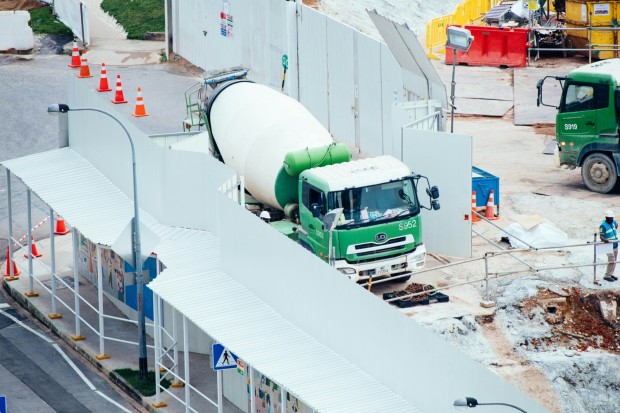Engineers and contractors meticulously calculate and adjust the mix ratio to meet the specific requirements of each construction project, ensuring long-lasting and resilient structures. The structure's integrity may be endangered if the mix ratio is not optimized, as this might result in either being too weak or prone to breaking concrete.

(Photo : Unsplash/CHUTTERSNAP )
What is a Concrete Mix Ratio?
Cement, water, and aggregates such as sand or gravel are brought together to form concrete. The workability of the concrete, its strength, and other characteristics of this kind are all determined by the proportions of each component. It is possible to use concrete with a predetermined ratio, or a professional can determine the ratio depending on the construction project's requirements, which depend on the construction project's conditions.
Moreover, the process of selecting the appropriate materials and deciding the ratios of those ingredients is known as proportioning. This process aims to generate a concrete mix that is not only easy to mix with but also possesses a high level of strength and durability. The quantities of the components that make up the concrete will be determined by their qualities.
As mentioned, developing an excellent concrete mix is a complex undertaking because each component possesses a unique set of characteristics compared to the others. Both critical components are testing the physical properties of each ingredient and assessing the load-bearing capacity of the development site.
Additionally, following the completion of the testing, the values of the collected physical attributes will serve as the foundation for all future concrete mix design considerations, and preventing the combination from failing guarantees the structure's integrity.
However, it is essential to remember that the mixture's components may differ from one project area to another. As a result, the physical characteristics of the mix must be evaluated under the requirements stated for each location.
Also Read: Top 6 Most Costly States for Home Construction
Types of Concrete Mix
If you want your construction project to be successful, you must have a solid understanding of the recommended concrete mixing ratio for slabs and floors. Establishing the appropriate percentage of concrete in the mixing process guarantees that your structure will possess the required strength, durability, and workability. Here are some of the several types of cement mixtures.
1. Standard Mix Concrete
The proportions of cement, sand, and aggregates generally found in standard concrete mixes are 1:2:4. The grades of concrete included in the normal concrete mix are M25 through M50.
2. Nominal Mix Concrete
Concrete mixes are available in various classes, and the ratios of concrete ingredients included in each grade are established. By way of illustration, the ratio of cement to sand to aggregate predetermined for M15 grade concrete is 1:2:4. Smaller buildings are often the ones that use the nominal mix. M5 through M20 are the concrete grades included in nominal mix concrete.
3. Design Mix Concrete
Several additives are incorporated into the concrete design mix to provide a more cost-effective match between the needed qualities of concrete and the design mix. A skilled civil engineer determines the mix ratios for planned mix concrete after analyzing the characteristics of each component. Accordingly, the ratio is determined by the specified criteria for the quality and strength of the concrete.
Related Article: 7 Major Concrete Mix Ratios That Affect the Durability of Your Construction Work!







